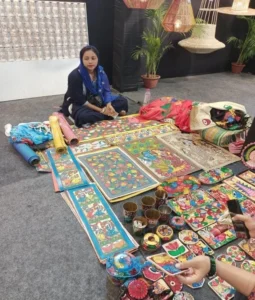Essential Programme on Immunization (EPI)
News: 2024 marks the 50th anniversary of WHO’s Expanded Programme on Immunization (EPI), highlighting a pivotal moment in global and Indian immunization efforts.
Launch: Expanded Programme on Immunization (EPI) was launched in 1974 by the WHO. It was earlier known as the Essential Programme on Immunization.
Aim: To ensure that all children, in all countries, benefited from life-saving vaccines.
Expansion of Disease Coverage: Initially this programme focused on protection against six childhood vaccine-preventable diseases that are:
-
- Bacillus Calmette-Guérin (BCG)
- Diphtheria
- Pertussis
- Tetanus
- Polio
Later on WHO added 7 more disease under this programme:
-
- Haemophilus influenzae type B (Hib)
- Hepatitis B (HepB)
- Rubella
- Pneumococcal disease (PNC)
- Human papillomavirus (HPV)
- Rotavirus (Rota)
- COVID-19 (for adults)
Importance:
- EPI remains dedicated to its objective of ensuring universal access to pertinent vaccines for all vulnerable populations.
- EPI collaborates harmoniously with other public health initiatives to combat infectious diseases and enhance overall health outcomes globally.
- The program strives for equitable distribution and utilization of vaccines to attain better health outcomes across diverse populations worldwide.
Patachitra Painting
News: Patachitra (scroll paintings) are gaining popularity worldwide.
Meaning and Origins:
- “Pata” derives from Sanskrit, meaning ‘cloth’, while “chitra” translates to ‘picture’ or ‘painting’.
- Patachitra refers to traditional cloth-based scroll paintings primarily found in eastern Indian states such as West Bengal and Odisha.

Historical Significance:
- Pattachitra’s origins trace back to the 12th century, associated with the Jagannath Rath Yatra festival.
Themes: The Patuas paint and sing on various themes like:
- Mythological tales (Ramayana, Mahabharata, Mangalkabya)
- Historical and contemporary themes (biographies of great personalities, nuclear warfare) and
- Social issues (women empowerment, child right, health, literacy).
Artists and Techniques:
- Bengal Patachitra artists, known as Patuas, particularly in Naya, Medinipur, carry the occupational surname of ‘Chitrakar’.
- Patachitra is distinguished by its bold colors, intricate lines, and distinct strokes.
- Artists utilize natural colors sourced from local elements like fruits and flowers.
- Patuas engage in painting and singing, covering diverse themes including mythology, historical events, contemporary issues, and social causes.
- During the presentation, the Patuas unfurl the scrolls while singing songs called Pater Gaan, synchronizing the storytelling with their music.
Materials and Process:
- Traditionally, cotton canvas was the primary medium; nowadays, both cotton and silk canvases are utilized.
- The canvas is prepared and reinforced before colors are applied directly without preliminary sketches.
- It’s customary to begin by completing the borders of the painting.
